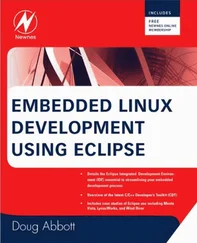The idea of a common hardware reference platform is not new. The venerable PC/104 and VMEbus are two examples of hardware platforms that have withstood the test of time in the embedded market. [24] VMEbus isn't really a hardware reference platform, per se, but based on Eurocard physical standards, the level of compatibility among multiple vendors qualifies it for the label.
More recent successful platforms include CompactPCI and its derivatives.
The CompactPCI (cPCI) hardware platform is based on PCI electrical standards and Eurocard physical specifications. cPCI has the following general features:
• Vertical cards of 3U or 6U heights
• Latch system for securing and ejecting cards
• Front- or rear-panel I/O connections supported
• High-density backplane connector
• Staggered power pins for hot-swap support
• Support by many vendors
• Compatibility with standard PCI chipsets
You can view highlights of and obtain specifications for the cPCI architecture at the PCI Industrial Computer Manufacturers Group (PICMG) cPCI web page, at www.picmg.org/compactpci.stm.
A successor to the successful cPCI, Advanced Telecommunications Computing Architecture is the name given to the architecture and platforms designed around the PICMG 3. x series of specifications. Many top-tier hardware manufacturers are shipping or developing new ATCA-based platforms. The primary applications for ATCA platforms are carrier-class telecommunications switching and transport equipment, and high-end data-center server and storage equipment.
ATCA platforms are leading the industry trend away from in-house proprietary hardware and software platforms. Many of the largest equipment manufacturers in the telecommunications and networking markets have been slowly moving away from the custom, in-house-designed hardware platforms. This trend is also evident in the software platforms, from operating systems to so-called middleware such as high-availability and protocol stack solutions. Downsizing and time-to-market pressures are two key factors driving this trend.
ATCA is defined by several PICMG specifications. Table 3-11 summarizes these specifications.
Table 3-11. ATCA PICMG 3.x Specification Summary
| Specification |
Summary |
| PICMG 3.0 |
Mechanical specifications, including interconnects, power, cooling, and base system management |
| PICMG 3.1 |
Ethernet and Fiber Channel switching fabric interface |
| PICMG 3.2 |
Infiniband switching fabric interface |
| PICMG 3.3 |
StarFabric interface |
| PICMG 3.4 |
PCI Express interface |
| PICMG 3.5 |
RapidIO Interface |
The platforms described in this section are the most relevant in any discussion of embedded Linux platforms today. Especially with ATCA, the industry is increasingly moving toward commercial off-the-shelf (COTS) technology. Both ATCA and Linux play increasingly important roles in this industry trend.
• Many stand-alone processors are supported under Linux. The most widely supported of these are IA32/IA64 and PowerPC architectures. These stand-alone processors are used as building blocks to build very-high-performance computing engines. We presented several examples from Intel, IBM, and Freescale.
• Integrated processors, or systems on chip (SOCs), dominate the embedded Linux landscape. Many vendors and several popular architectures are used in embedded Linux designs. Several of the most popular are presented in this chapter by architecture and manufacturer.
• An increasingly popular trend is to move away from proprietary hardware and software platforms, toward commercial off-the-shelf (COTS) solutions. Two popular platforms in widespread use in embedded Linux systems: cPCI and ATCA.
3.4.1. Suggestions For Additional Reading
PowerPC 32-bit architecture reference manual:
Programming Environments Manual for 32-Bit Implementations of the PowerPC
ArchitectureRevision 2
Freescale Semiconductor, Inc.
www.freescale.com/files/product/doc/MPCFPE32B.pdf
PowerPC 64-bit architecture reference:
The Programming Environments Manual for 64-Bit MicroprocessorsVersion 3.0
International Business Machines, Inc.
Short summary of PowerPC architecture:
A Developer's Guide to the POWER Architecture
Brett Olsson, Processor Architect, IBM Corp.
Anthony Marsala, Software Engineer, IBM Corp.
www-128.ibm.com/developerworks/linux/library/l-powarch/
Intel XScale summary page
www.intel.com/design/intelxscale/
Chapter 4. The Linux KernelA Different Perspective
If you want to learn about kernel internals, many good books are available on kernel design and operation. Several are presented in Section 4.5.1, "Suggestions for Additional Reading," in this and other chapters throughout the book. However, very little has been written about how the kernel is organized and structured from a project perspective. What if you're looking for the right place to add some custom support for your new embedded project? How do you know which files are important for your architecture?
At first glance, it might seem an almost impossible task to understand the Linux kernel and how to configure it for a specific platform or application. In a recent Linux kernel snapshot, the Linux kernel source tree consists of more than 20,000 files that contain more than six million linesand that's just the beginning. You still need tools, a root file system, and many Linux applications to make a usable system.
This chapter introduces the Linux kernel and covers how the kernel is organized and how the source tree is structured. We then examine the components that make up the kernel image and discuss the kernel source tree layout. Following this, we present the details of the kernel build system and the files that drive the kernel configuration and build system. This chapter concludes by examining what is required for a complete embedded Linux system.
Linus Torvalds wrote the original version of Linux while he was a student at the University of Helsinki in Finland. His work began in 1991. In August of that year, Linus posted this now-famous announcement on comp.os.minix:
From: torvalds@klaava.Helsinki.FI (Linus Benedict Torvalds)
Newsgroups: comp.os.minix
Subject: What would you like to see most in minix?
Summary: small poll for my new operating system
Message-ID: <1991Aug25.205708.9541@klaava.Helsinki.FI>
Date: 25 Aug 91 20:57:08 GMT
Organization: University of Helsinki
Hello everybody out there using minix -
I'm doing a (free) operating system (just a hobby, won't be big and professional
like gnu) for 386(486) AT clones. This has been brewing since april, and is
starting to get ready. I'd like any feedback on things people like/dislike in
minix, as my OS resembles it somewhat(same physical layout of the file-system
(due to practical reasons)among other things).
I've currently ported bash(1.08) and gcc(1.40), and things seem to work. This
implies that I'll get something practical within a few months, and I'd
like to
know what features most people would want. Any suggestions are welcome, but I
won't promise I'll implement them :-)
Linus (torvalds@kruuna.helsinki.fi)
PS. Yes - it's free of any minix code, and it has a multi-threaded fs.
Читать дальше












